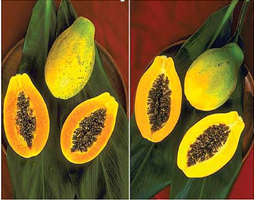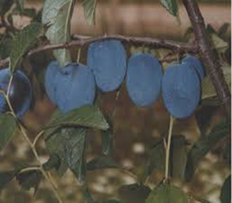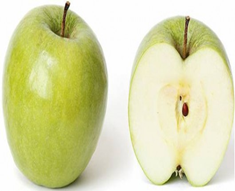Authors: Sunil Kumar , Om Prakash Patidar
Rapid increase of human population in this changing climate scenario, resulted in increased demand of plant based food and energy sources. Fruits are often referred as "protective food" being rich in vitamins and minerals. According to Indian Horticulture Data base 2015, About 654 million tonnes fruits were produced in the world in 2014. However, fruit production is severally impacted by many abiotic and biotic stresses. Because an increase demand exists in global fruit production, therefore many economically important fruit crops are need to be improved. During the past, some efforts were made through conventional breeding with respect to these problems. However, classical fruit breeding has had little success in improving fruit plants and is constrained due to long juvenile period, genetic erosion, genetic drag and reproductive barriers that limit the transfer of favourable alleles from diverse genetic resources (Varshney et al., 2011). Thus, there is an urgent need for the biotechnology-assisted crop improvement, which ultimately aimed to obtain novel plant traits. Many tissue culture based technologies such as somatic hybridization, in vitro selection, haploid and double haploid production, encapsulation technology have also been applied to some fruit plants for crop improvement. In the recent past advances in genetic engineering methods based on the introduction of transgenes and development of transgenic plant have been successfully adopted to improve crops. In the last two decades, genetic transformation of fruit crops has focused mainly on enhancing resistance to biotic stresses (viruses, fungi, and bacteria), increasing tolerance against abiotic stresses (drought, frost, and salt), modified plant growth habit and fruit quality. However, there are few cases of field evaluation and commercial application of these transgenic plants (Litz and Padilla, 2012).
Approved transgenic fruit crops
| Crop | Variety | Trait | Developer | Approval |
| Papaya (Carica papaya) | SunUp | PRSV resistant | Cornell U. | USA (1996) Canada (2003) Japan (2011) |
| Papaya (Carica papaya) | Rainbow | PRSV resistant | U. Florida | USA (2008) |
| Plum (Prunus domestica) | Honey Sweet | PPV resistant | USDA ARS | USA (2009) |
| Apple (Malus x domestica) | Arctic apple cv. Golden Delicious and Granny Smith | Non-browning | Okanagan Specialty Fruits | USDA (2015) |
1. Papaya (Carica papaya):

PRSV resistant transgenic papaya has been developed and commercialized in 1998 in Hawaii, USA by Dr. Dennis Gonsalves and his team (Gonsalves, 1998). SunUp and Rainbow (SunUp x Kapoho) cultivars of transgenic papaya have been developed by cloning CP gene of mild strain of PRSV from Hawaii. The embryogenic tissue was bombarded with tungsten particles coated with engineered DNA construct of the PRSVHA 5-1 CP gene using the gene gun. Fifteen months later, transgenic plants were obtained and grown in the greenhouse.
2. Plum (Prunus domestica):

Plum is one of the tree fruits threatened by Plum pox potyvirus (PPV) a quarantine disease that causes fruit loss to plums and other stone fruits. The use of resistant cultivars represents the most effective solution to control sharka. As an enhancement to classical breeding, genetic engineering was used to produce transgenic clones that contain the PPV coat protein (CP) gene, applying the principle of pathogen-derived resistance. A result of this effort was the development of a transgenic clone designated as C5 (cv. HoneySweet).
3. Apple (Malus x domestica):

The “non-browning” apple is genetically engineered to keep from going brown after being cut. When apple flesh is cut and exposed to oxygen, it begins to brown. But the GM apple or “Arctic Apple,” is resistant to browning. The “non-browning” GM apples are designed to look fresh when they’re not. It was developed by silencing a gene in the apple (that controls browning) by inserting modified apple DNA. It is was approved for sale by USDA in 2015.
References
Gonsalves, D. (1998). Control of papaya ring spot virus in papaya: A case study. Annu. Rev. Phytopathol., 36:415�"437.
Litz, R. E. and Padilla, G. (2012). Genetic transformation of fruit trees. In: Priyadarshan PM, Schnell R J (eds) Genomics of tree crops. Springer, Berlin, pp 117�"153.
Varshney, R. K., Bansal, K. C., Aggarwal, P. K., Datta, S. K., Craufurd, P. G. (2011) Agricultural biotechnology for crop improvement in a variable climate: hope or hype? Trends Plant Sci., 16:363�"371.
About Author / Additional Info:
Author is a PhD Scholar in Division of Fruits & Horticultural Technology, ICAR- Indian Agricultural research Institute, New Delhi, India